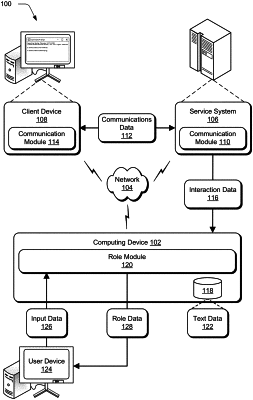| CPC G06F 40/279 (2020.01) [G06N 3/044 (2023.01); G06N 3/08 (2013.01)] | 20 Claims |

|
1. A method comprising:
receiving, by a processing device, interaction data describing interactions of client devices associated with a user ID, the interactions including communications relating to a product or service between the client devices and a service system;
generating, by the processing device, a corpus of text that is associated with the user ID based on the interaction data;
computing, by the processing device, feature values of features using a first machine learning model by processing the corpus of text using both character level embeddings and word level embeddings for the corpus of text, the features representing questions with respect to the corpus of text and the feature values representing answers to the questions extracted from the corpus of text;
generating, by the processing device, question aware representations using a two layer highway network, a contextual embedding layer, and an attention flow layer of the first machine learning model based on the character level embeddings, the word level embeddings, and the features, each of the question aware representations indicates a probability of a word included in the corpus of text being included in an answer of the answers to the questions, an input to the contextual embedding layer is output from the two layer highway network and an input to the attention flow layer is output from the contextual embedding layer;
generating, by the processing device, a classification of a role using a second machine learning model by processing the feature values and the question aware representations, the classification of the role indicating a relationship of the user ID with respect to the product or service; and
outputting, by the processing device, an indication of the classification of the role for display in a user interface of a display device.
|